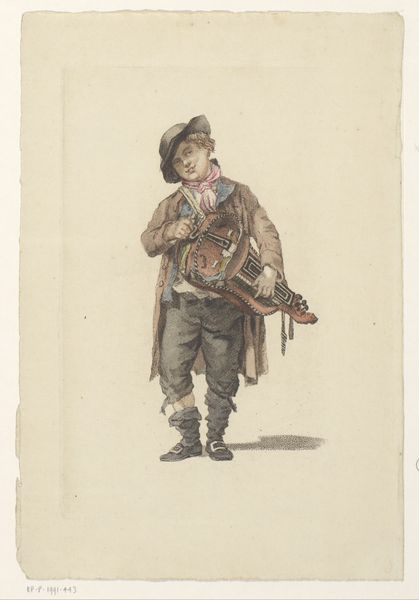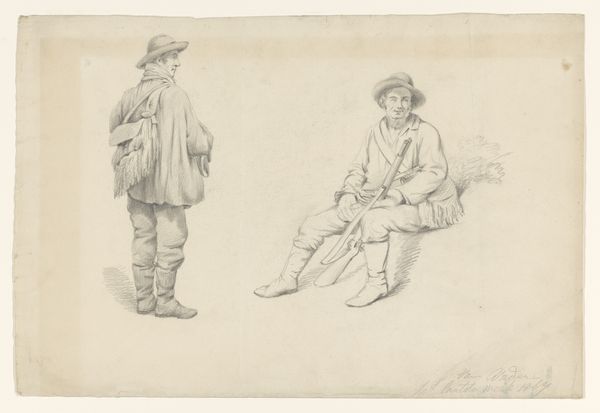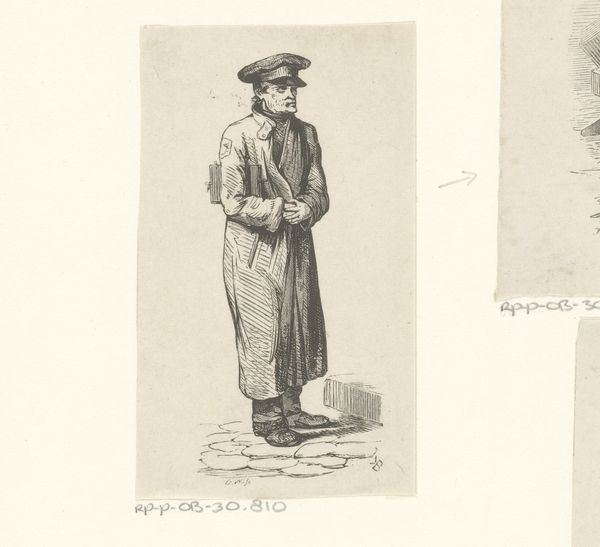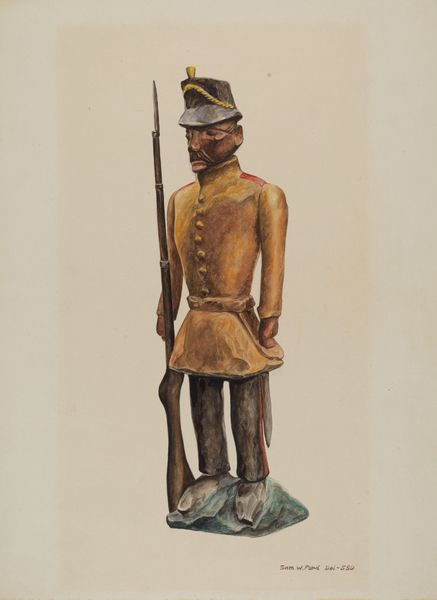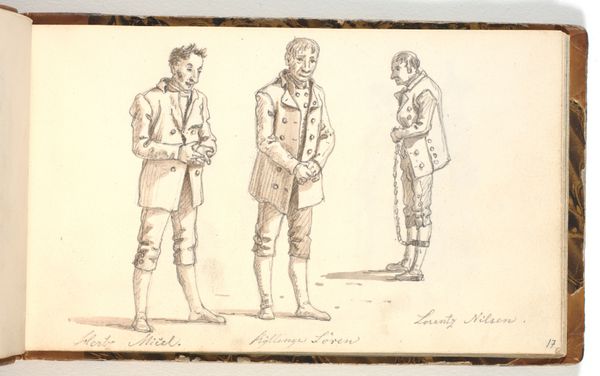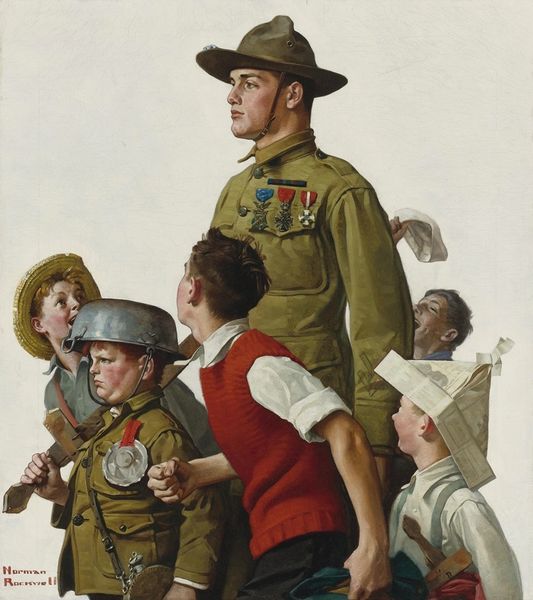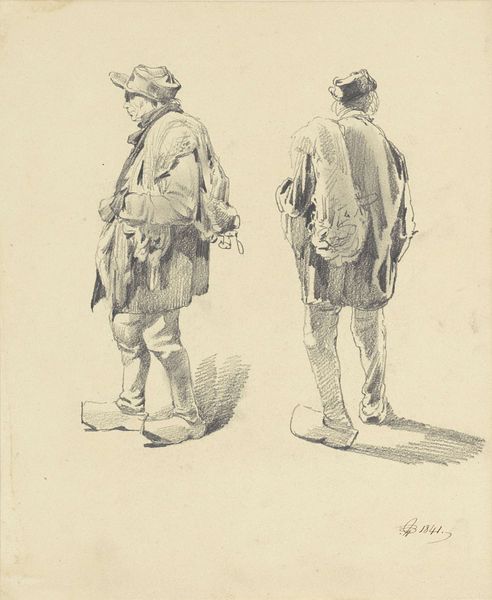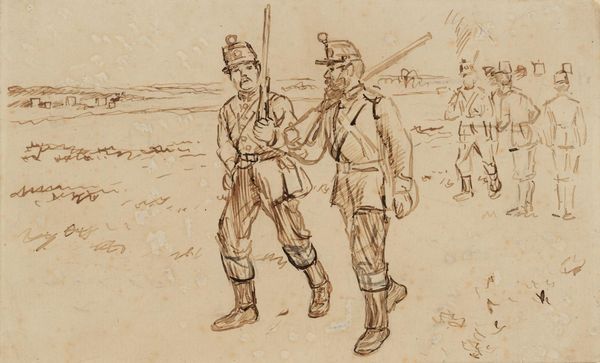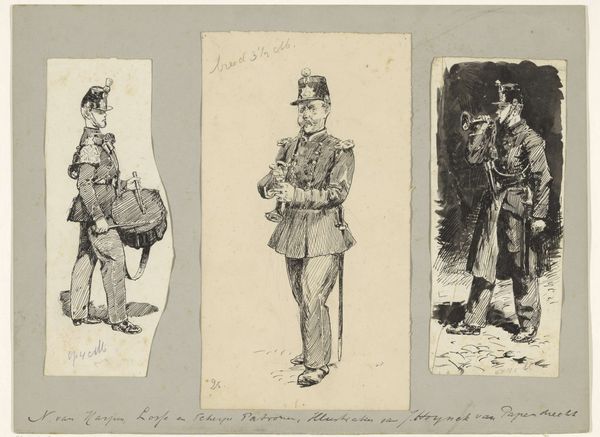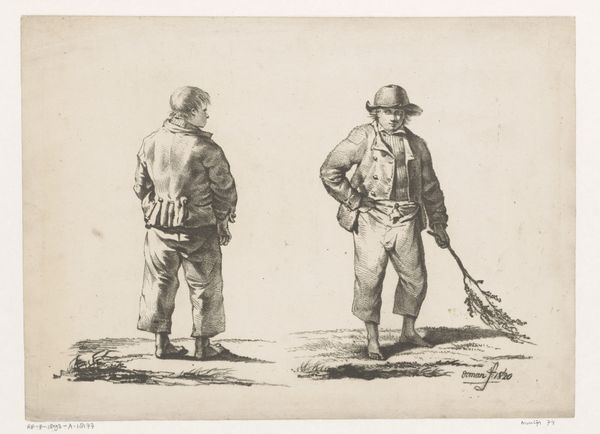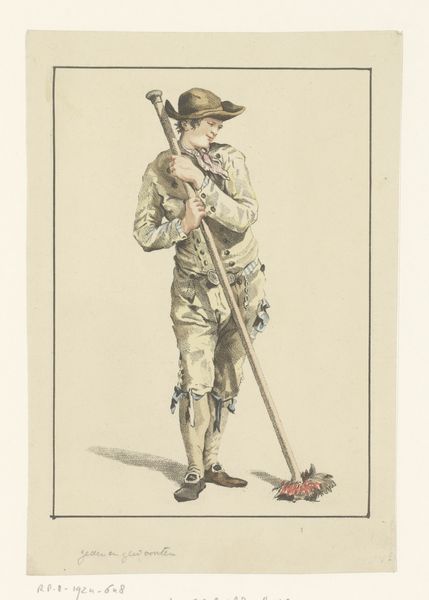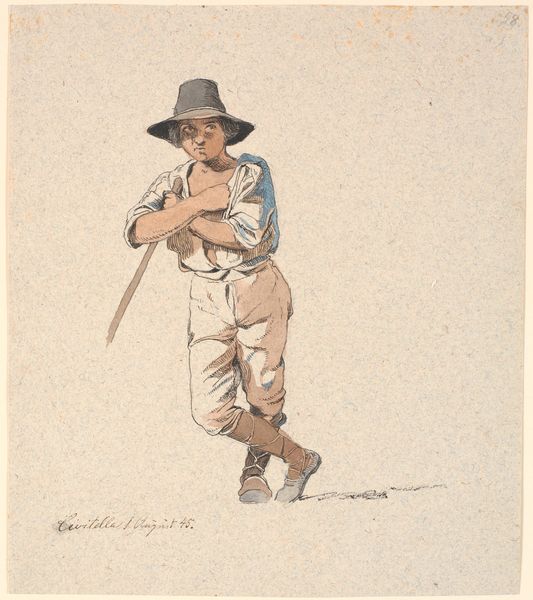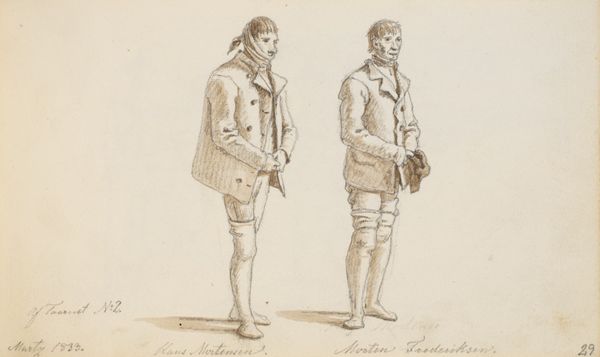
drawing, watercolor
#
drawing
#
figuration
#
watercolor
#
watercolour illustration
#
genre-painting
Dimensions: overall: 21.2 x 28.8 cm (8 3/8 x 11 5/16 in.) Original IAD Object: 6" high; 9 3/16" wide
Copyright: National Gallery of Art: CC0 1.0
Curator: Here we have William O. Fletcher's "Soldier in Khaki Coin Bank," created around 1938. It’s a watercolor and drawing piece, quite simple really. Editor: My initial thought? Mellifluous earth tones meet…mildly menacing automatons. The shiny finish, combined with the static poses, give them an oddly synthetic appearance, even as the watercolor medium betrays a certain softness. Curator: It is intriguing, isn't it? I see this work within the context of pre-war America, just recovering from the Depression, and the increasing militarization in Europe looming overhead. This piece could speak to that collective consciousness—children saving for an uncertain future potentially involving war. Editor: That makes sense historically, especially contextualizing it to when saving was really stressed because money was a little tighter and a savings during war can impact how the war ends as well as when children are able to buy and save and invest, giving money early. But formally, there's this fascinating tension. Fletcher captures a sense of stoicism in these figures, but the slight asymmetry, particularly in the soldier on the left's posture, almost undercuts that rigidity. There's a quiet humanity attempting to peek through. Curator: And consider that it’s not just “any soldier,” it is meant to evoke a coin bank. This connects everyday consumption with the glorification of military service. Think of the messages embedded: support for the troops and normalization, even from childhood, of contributing to that effort financially. The politics of childhood socialization! Editor: Interesting that you say childhood socialization! This brings an image to mind that makes me picture those classic tin toy soldiers, almost mechanical and infinitely reproducible. This evokes a sort of "boyhood." Here, though, the watercolor suggests fragility, making the khaki uniforms seem like costumes donned by kids rather than true armor or true protection for their childhoods or their own "bank." Curator: Exactly. This combination exposes a contradiction at the heart of national identity in the late 1930s. These children grow up fast as new global events change quickly, or perhaps they won't ever grow up. There is a bittersweet premonition hidden behind the genre-painting. Editor: Ultimately, seeing this, one is reminded that technique always lends itself to social, cultural, and political histories because art becomes history whether intentional or by pure "happenstance". Curator: I couldn't have said that better, and this subtle picture really allows for this broader conversation about cultural moments captured with simplicity.
Comments
No comments
Be the first to comment and join the conversation on the ultimate creative platform.
